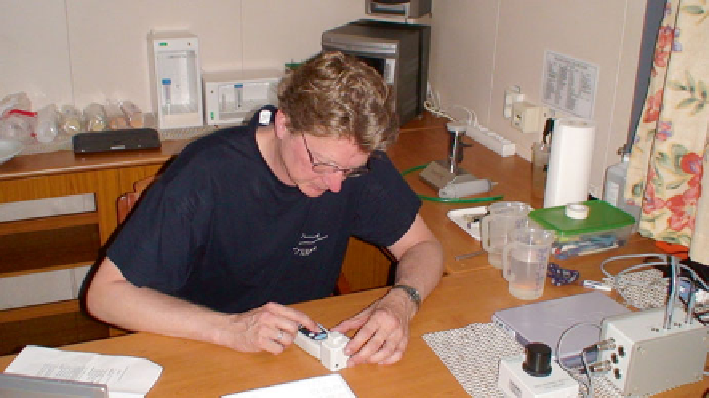Environmental Engineering Reference
In-Depth Information
Fig. 23
Hand-held fl uorometer used on board
in a sample by e.g. hand-held fl uorometers (Fig.
23
). To document colony forming
units and for an enumeration of these, samples need to be incubated and it takes at
least 6 h incubation time to come to a result so that this is an unsuitable method for
an indicative sample analysis.
Detailed Sample Processing Methods
A wealth of different sample processing methods are available and also regionally
different methods are used for organism detection.
As time and portability of methods is here not as critical as for the indicative
sample analysis, the following methods are recommended:
• Phytoplankton. Although machine counts may be considered, it seems that
human counts using a counting chamber and an epifl uorescence microscope
(Fig.
24
) deliver the highest accuracy in viable cell counts. Stains may be used to
separate viable from dead cells and here, in the same way as for an indicative
analysis, (CM)FDA and Sytox are recommended (see above).
• Zooplankton. An analysis with a stereomicroscope, operated by a trained biolo-
gist, will result in a viable organism count. Exposing the organisms to light or
gentle poking may trigger movement and fully intact moving organisms should
be considered viable.
• Indicator microbes. Selective media should be used to grow bacteria colonies
which can subsequently be counted by an analyst or machine. The incubation time
is at least 2 days and the documentation of
Escherichia coli
and Cholera bacteria
may require the use of more than one medium during the incubation effort.

Search WWH ::

Custom Search